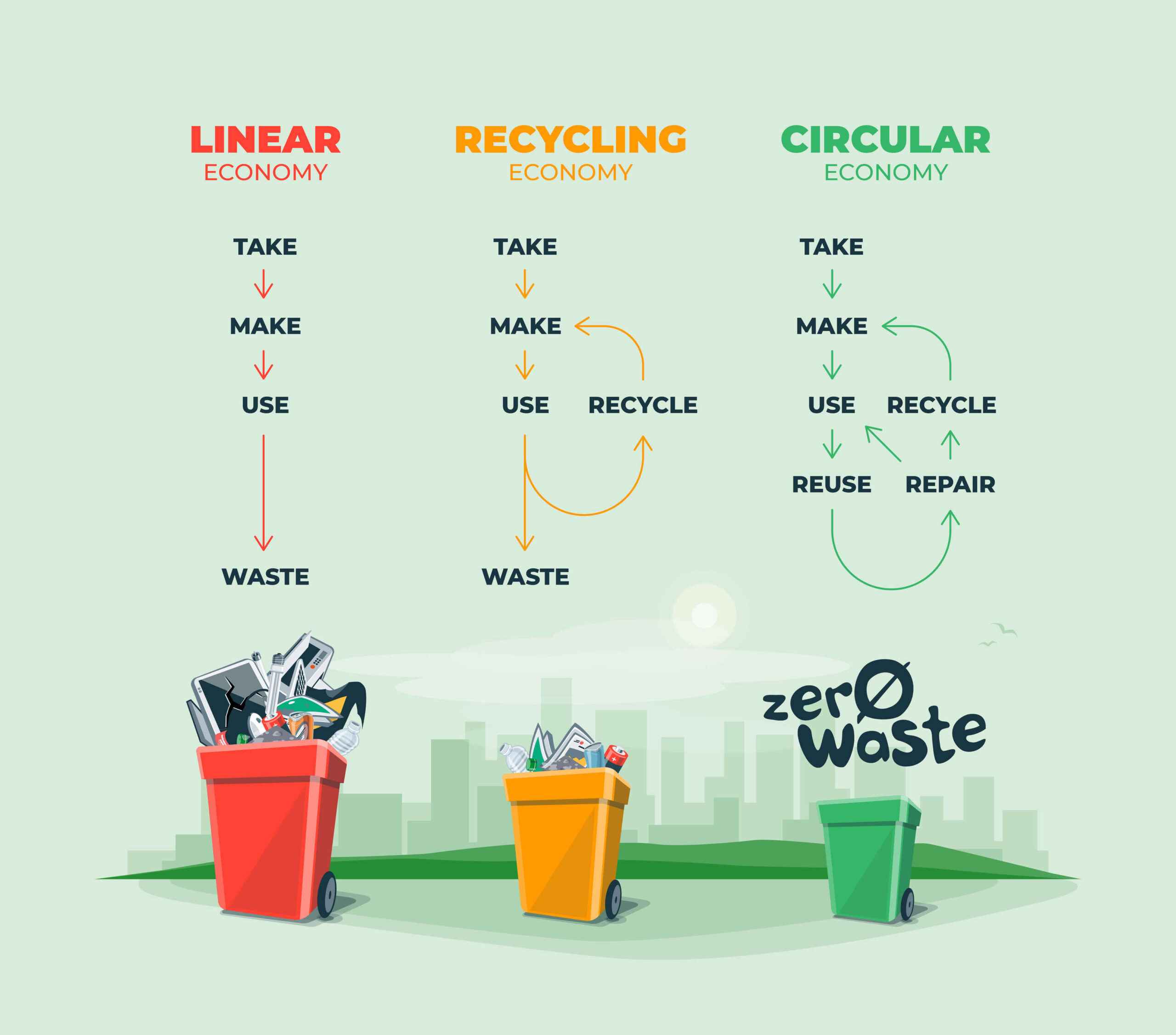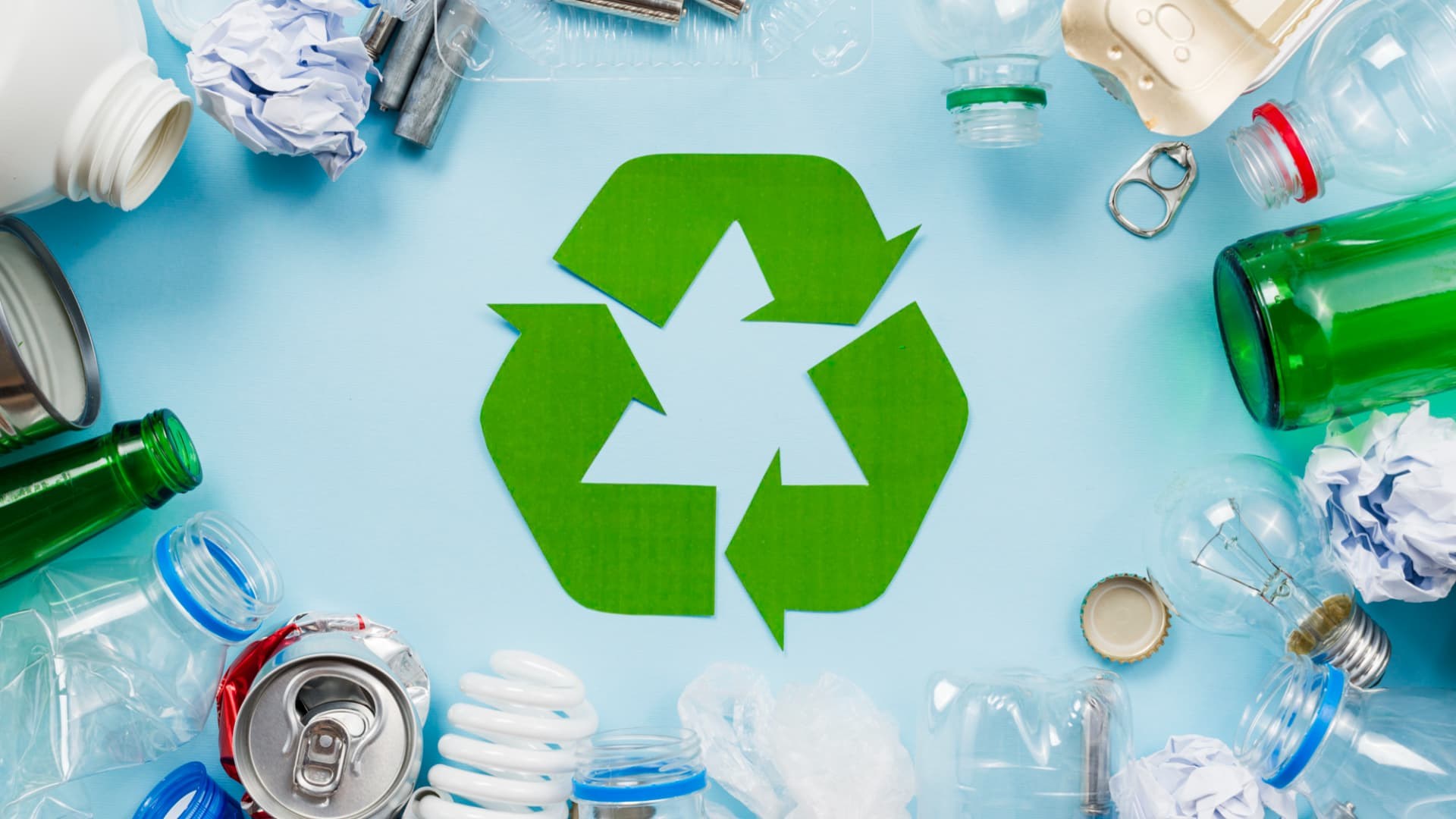Recycling Lives Services: Blazing A Trail in Responsible Recycling
Wiki Article
Checking Out Different Kinds Of Waste in Modern Waste Monitoring Systems
The contemporary landscape of waste monitoring entails browsing a complicated range of waste types, each needing specialized handling and disposal techniques to reduce environmental influences. Municipal solid waste, unsafe waste, digital waste, and organic waste each existing distinct difficulties and chances for resource healing.Community Strong Waste
Local solid waste, frequently described as household trash or waste, includes a variety of thrown out materials generated by residential, industrial, and institutional resources within a community. This waste stream normally includes things such as packaging, food scraps, backyard trimmings, paper, plastics, fabrics, and disposed of home items. The administration of metropolitan solid waste is a crucial part of metropolitan preparation and public health and wellness, demanding effective collection, transport, and disposal systems.Efficient waste administration systems are created to decrease ecological impact while taking full advantage of source recovery. Composting organic waste, such as food scraps and yard trimmings, not only decreases land fill use but also produces beneficial soil changes.
Communities have to additionally resolve the logistical and economic challenges associated with waste management. Applying pay-as-you-throw systems, enhancing public awareness, and purchasing technology can significantly boost waste diversion prices. By incorporating these techniques, communities can cultivate sustainable communities, reduce greenhouse gas emissions, and preserve all-natural resources.
Contaminated Materials

Efficient hazardous waste administration entails several vital steps: identification, therapy, disposal, and partition. Identification requires the category of waste based on its harmful buildings. Segregation guarantees that harmful products are stored independently from non-hazardous waste to avoid cross-contamination. Treatment techniques, such as chemical neutralization, incineration, and stablizing, are utilized to lower the poisoning, quantity, or mobility of the waste. Disposal options, consisting of safe garbage dumps and below ground storage space, are chosen to make certain long-term containment.
Governing structures, such as the Source Conservation and Healing Act (RCRA) in the United States, provide standards and requirements for dangerous waste management. Adherence to these laws, combined with improvements in waste therapy innovations, is important in reducing the dangers related to contaminated materials.
Digital Waste
Digital waste, typically described as e-waste, stands for a swiftly growing challenge in waste administration systems worldwide. This type of waste incorporates thrown out digital devices and tools such as mobile phones, computers, tvs, and other electronic appliances. The rapid pace of technical advancement, coupled with reducing product life-spans and consumer need for the most recent tools, has tremendously boosted the quantity of e-waste produced yearly.E-waste is specifically troublesome as a result of its complicated make-up, typically containing harmful materials like cadmium, mercury, and lead, which present substantial ecological and health risks otherwise properly handled. Alternatively, e-waste also contains valuable materials such as gold, silver, and copper, which can be recovered and recycled. The twin nature of e-waste-- both valuable and dangerous-- demands specific handling, reusing, and disposal procedures.
Reliable e-waste administration includes stringent regulatory structures, robust collection systems, and advanced recycling modern technologies. Public recognition and involvement are important, as inappropriate disposal techniques, such as prohibited dumping and informal recycling, exacerbate ecological contamination and health and wellness dangers. Subsequently, improving e-waste management practices is important for minimizing ecological impact and recovering valuable resources in a significantly electronic world.

Organic Waste
Organic waste, making up kitchen area scraps, yard trimmings, and agricultural residues, represents a significant part of the international waste stream. This kind of waste is naturally degradable, meaning it can be damaged down by bacteria into easier organic substances. In spite of its possibility for natural decomposition, incorrect management of organic waste can bring about unfavorable environmental influences, including the discharge of greenhouse gases such as methane, which add to climate adjustment.Efficient monitoring of organic waste is vital for minimizing these environmental impacts (recycling lives services). Composting is an extensively adopted technique, changing organic waste into nutrient-rich compost that can enhance dirt health and agricultural performance. Furthermore, anaerobic food digestion is an arising technology that converts natural waste into biogas, a renewable resource resource, and digestate, which can be utilized as plant food
Municipalities and waste management entities should apply durable natural waste collection and treatment programs to optimize the advantages of these procedures. Public education campaigns can additionally play a crucial duty in encouraging families and companies to different organic waste from other types of waste. By prioritizing the administration of organic waste, cultures can decrease landfill usage, reduced greenhouse gas discharges, and create important by-products for agricultural use.

Cutting-edge Waste Monitoring
In the realm my response of waste monitoring, try this cutting-edge methodologies are transforming exactly how societies handle their refuse, intending for sustainability and effectiveness. These innovations encompass a series of technologies and practices that enhance recycling prices, decrease garbage dump reliance, and lower ecological influence. One noticeable innovation is the application of smart waste bins furnished with sensing units that monitor fill degrees and enhance collection paths. This not just reduces gas usage but also minimizes greenhouse gas discharges.
An additional noteworthy growth is the fostering of waste-to-energy (WtE) innovations. By converting non-recyclable waste right into usable power with processes such as incineration and anaerobic food digestion, WtE decreases land fill problem and supplies an eco-friendly power source. Furthermore, improvements in chemical recycling permit the malfunction of complicated plastics into their original monomers, allowing the production of new, premium plastic products.
Furthermore, the round economy model is obtaining traction, stressing the style of products and systems that focus on reusability and source efficiency. This all natural strategy motivates industries to lessen waste generation from the start. Via these ingenious approaches, modern waste administration systems are not just dealing with the instant challenges of waste disposal yet also paving the method for a much more sustainable future.
Final Thought
A thorough understanding of municipal strong waste, harmful waste, electronic waste, and natural waste, coupled with the execution of cutting-edge waste monitoring options, is vital for More Info minimizing environmental impacts. Integrating innovations such as wise waste containers and waste-to-energy systems can boost efficiency and sustainability. Effective waste administration methods not just foster source recovery but additionally advertise public recognition and engagement, ultimately adding to the development of a circular economy.The contemporary landscape of waste management entails browsing a complex array of waste types, each calling for specialized handling and disposal approaches to minimize environmental impacts. Municipal strong waste, unsafe waste, digital waste, and organic waste each existing distinctive difficulties and chances for resource recuperation.Digital waste, generally referred to as e-waste, stands for a swiftly expanding challenge in waste management systems globally. Through these innovative approaches, modern-day waste administration systems are not only addressing the immediate challenges of waste disposal yet likewise paving the means for a much more sustainable future.
An extensive understanding of municipal strong waste, harmful waste, electronic waste, and natural waste, paired with the application of ingenious waste management options, is vital for minimizing environmental effects. (recycling lives services)
Report this wiki page